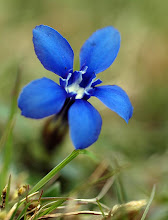These beautiful cells come from the midrib of a banana leaf. Each is shaped like a 6- or 7-armed star, with its arms joined to the arms of surrounding cells, forming a lattice of cells. This form of tissue is known as stellate parenchyma and you can find another example here. The image was produced using polarised light and the brightly coloured birefringent objects inside the cells are calcium oxalate crystals inside the cell vacuole. You can see further examples of calcium oxalate crystals, including a video of their Brownian motion inside a cell, if you click here.
To find these cells you need to look inside the midrib of a banana (Musa sp.) leaf .....
by cutting transversely across the midrib, which reveals this internal pattern of strenthening tissue filled with very delicate, transverse plates of glassy cells ....
... then dissect out one of these plates of cells and mount it on a microscope slide.






























